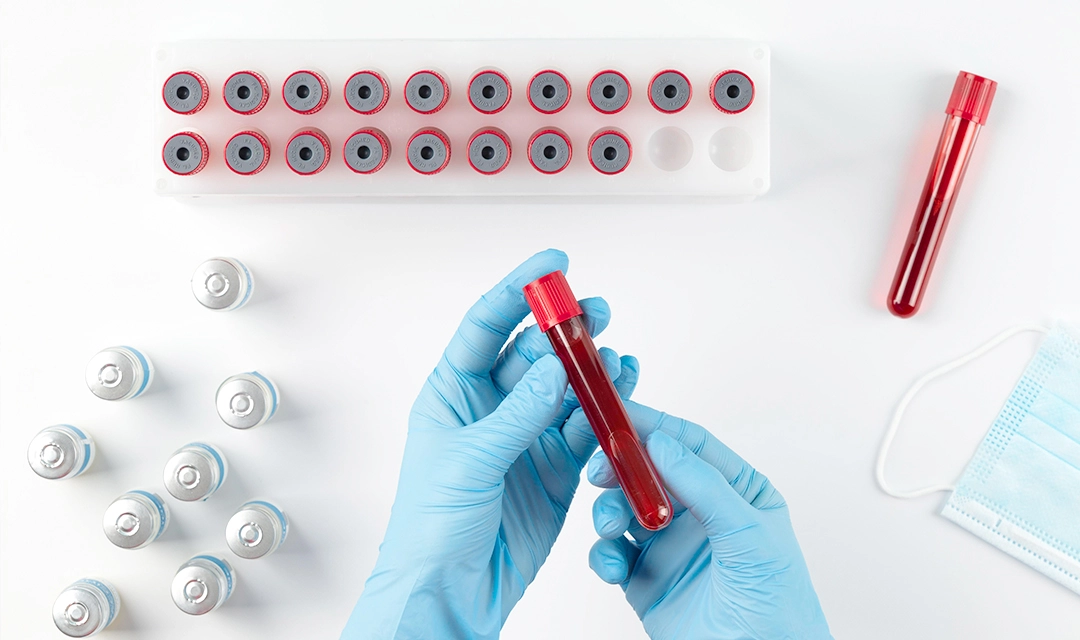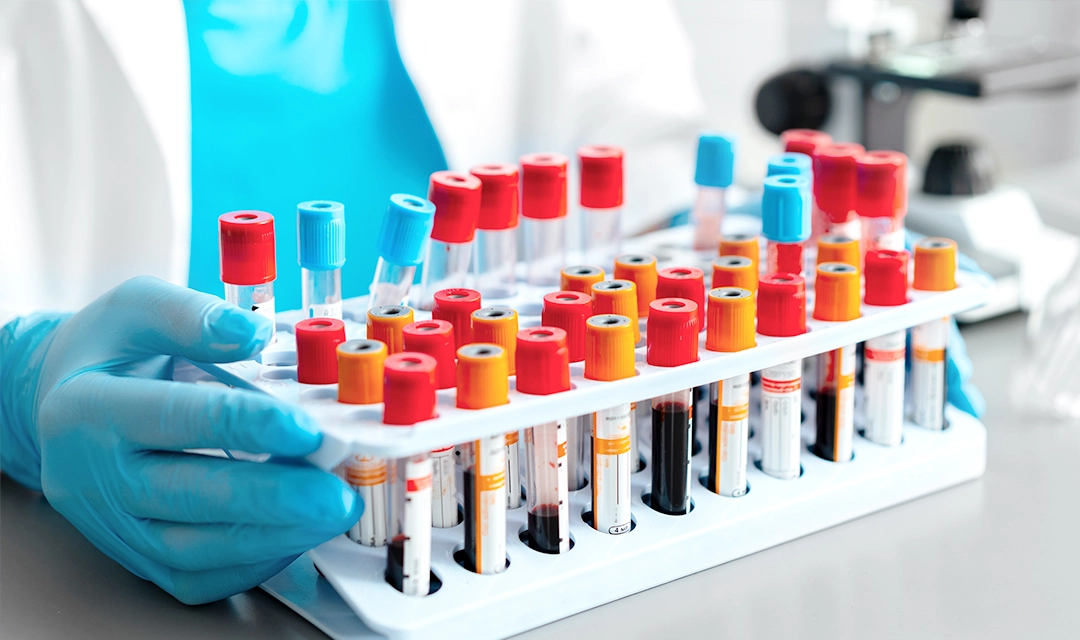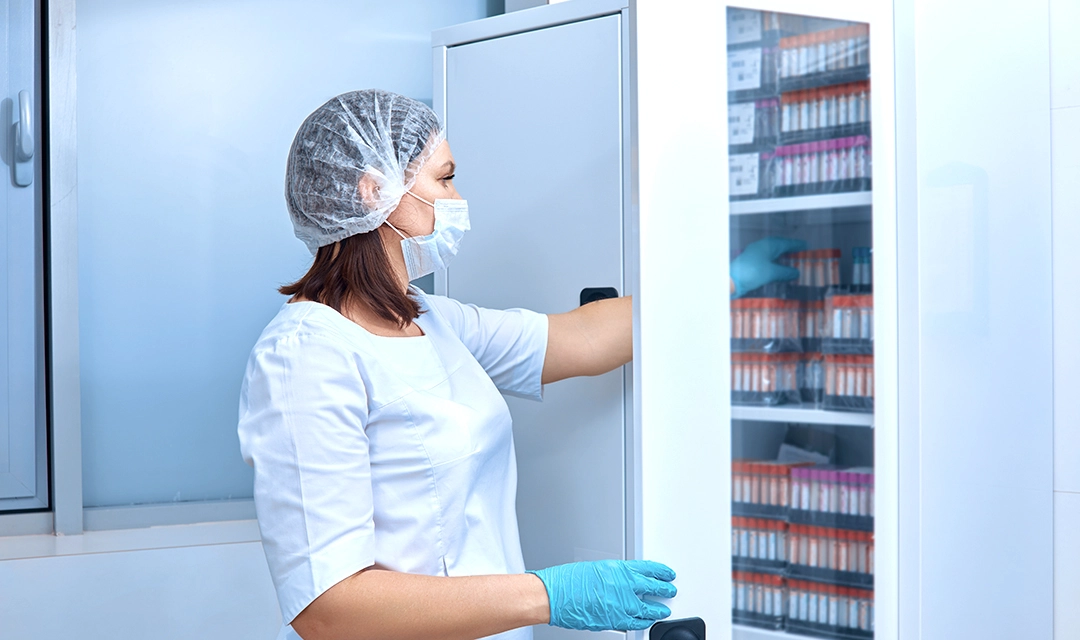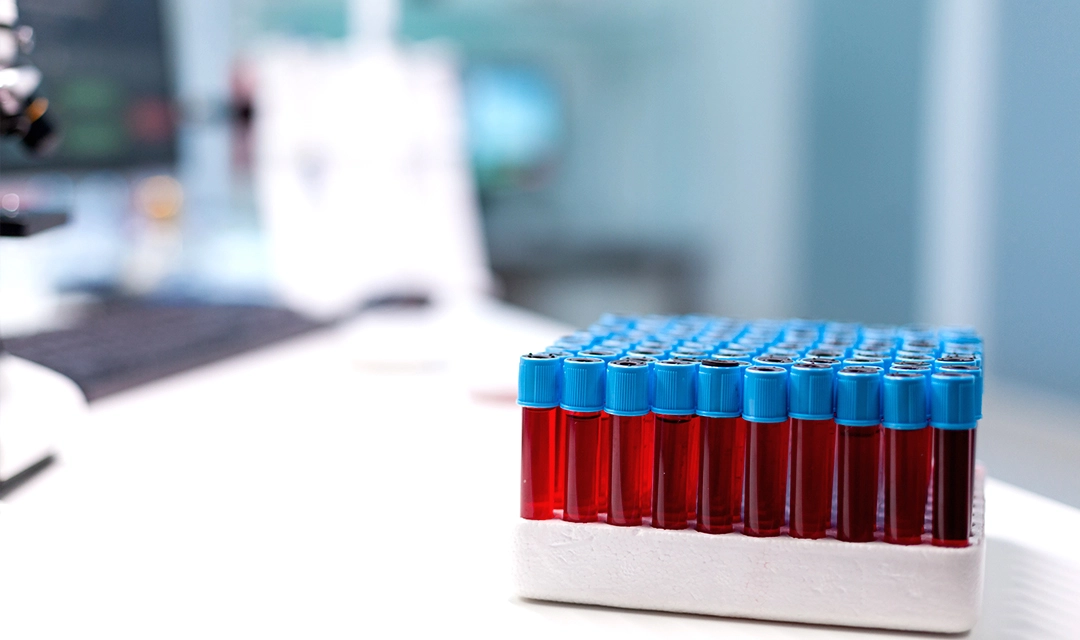- +1 (408)580-1396
- info@ibiospecimen.com
Paraffin Embedded Tissue in Oklahoma
Human Biospecimens
Paraffin Embedded Tissue in Oklahoma
Paraffin embedding of tissue is a common technique used in histology and pathology to preserve and prepare tissue samples for microscopic examination. This process involves treating tissues with various chemicals to remove water and replace it with paraffin wax. In Oklahoma, this technique is widely employed in medical and research institutions for diagnosing diseases, studying cellular structures, and conducting research on various conditions, including cancer.
The procedure begins with fixing the tissue in formalin to prevent decomposition. The tissue is then dehydrated using a series of alcohol washes. Subsequently, the tissue is cleared using xylene, which replaces the alcohol. The final step involves embedding the tissue in liquid paraffin, which solidifies as it cools. This embedded tissue block is then sliced into thin sections using a microtome and mounted onto glass slides.
In Oklahoma, paraffin-embedded tissue sections are stained with various dyes to highlight different cellular components. Hematoxylin and eosin staining is commonly used to visualize cell nuclei and cytoplasm. Specialized staining techniques are also employed to detect specific molecules or structures within the tissue.
Do you require specific Paraffin Embedded Tissue for Sale in Oklahoma? Feel free to inform us.

Finding the Right Paraffin Embedded Tissue in Oklahoma
iBioSpecimen Marketplace is a fast, compliant, revolutionary one-stop access to millions of Paraffin Embedded Tissue in Oklahoma and patients from a diverse network of providers.
What is paraffin embedded tissue?
Paraffin embedded tissue refers to a method of preserving tissue samples for examination and analysis in a laboratory setting. This process involves taking a small piece of tissue from a patient, usually during a surgical procedure or biopsy, and placing it in a fixative solution to prevent decay and maintain its integrity.
Once the tissue has been fixed, it is dehydrated by gradually replacing the water content with alcohol. This is followed by a series of steps involving the use of xylene, a clear liquid that helps remove the alcohol from the tissue. The tissue is then immersed in molten paraffin wax, which infiltrates and impregnates the tissue, ensuring its preservation.
After the tissue has been embedded in paraffin wax, it becomes solidified, forming a block. This block can be sliced into thin sections, typically 4-6 micrometers thick, using a device called a microtome. These thin sections are then mounted onto glass slides and subjected to a process called deparaffinization, which removes the wax.
The deparaffinized tissue sections are then stained with various dyes to highlight specific structures or cells of interest. This staining process helps pathologists and other medical professionals examine the tissue under a microscope and make accurate diagnoses.
Paraffin embedded tissue is commonly used in histopathology, a branch of medicine that involves the microscopic examination of tissue samples. It allows for detailed analysis of cellular and tissue structures, aiding in the diagnosis of various diseases, including cancer, infections, and inflammatory conditions. By preserving the tissue in paraffin wax, it can be stored for long periods of time and can be easily transported to different laboratories for analysis.
One of the main advantages of paraffin embedded tissue is that it allows for retrospective studies. This means that tissue samples can be stored for future research or reevaluation, even years after the initial diagnosis. This is particularly useful in cases where new information or technologies become available, allowing for a more accurate interpretation of the tissue sample.
Paraffin embedded tissue is also compatible with a wide range of laboratory techniques. Once the tissue has been sectioned and stained, it can be further analyzed using immunohistochemistry, molecular testing, or other specialized techniques. This versatility makes it a valuable tool in the field of diagnostic medicine.
In USA, there are several laboratories and hospitals that offer blood tests and diagnostic services that may involve the use of paraffin embedded tissue. It is important to choose a reputable and reliable facility that follows strict quality control measures to ensure accurate and reliable results.
When seeking blood tests in USA for diagnostic purposes, it is advisable to consult with a healthcare professional or specialist who can guide you in choosing the appropriate tests and procedures based on your specific condition or symptoms. They can also provide recommendations for reputable laboratories or hospitals that offer paraffin embedded tissue analysis.
What are the advantages of using paraffin embedded tissue?
Paraffin embedded tissue is a commonly used technique in pathology for preserving and analyzing tissue samples. There are several advantages of using paraffin embedding for various diagnostic purposes.
- Preservation of tissue structure: Paraffin embedding helps in preserving the integrity and structure of the tissue sample. This enables pathologists to study the architecture of the cells and tissues under a microscope, which is crucial for accurate diagnosis.
- Long-term storage: Paraffin embedding is an efficient method for long-term storage of tissue samples. Once embedded in paraffin wax, the tissue block can be stored for several years without significant degradation, allowing for future reference or additional testing.
- Compatibility with various techniques: Paraffin embedded tissue is compatible with a wide range of laboratory techniques and tests. It allows for the application of immunohistochemistry, special staining, and molecular analysis methods, enabling the identification of specific markers or genetic abnormalities associated with diseases.
- Easy handling and transportation: Paraffin embedded tissue blocks are relatively easy to handle and transport. They are compact and can be stored and shipped without specific temperature requirements, making it convenient for sending samples to reference laboratories or pathology centers for further analysis.
- Availability of archival material: Paraffin embedded tissue blocks can serve as valuable archival material for conducting retrospective studies or research projects. These blocks can be utilized in the future to explore new diagnostic or therapeutic approaches.
- Standardization of processing: Paraffin embedding involves a standardized and well-established processthat ensures consistent and uniform results. This standardization helps in minimizing variability between different laboratories and ensures reliable and reproducible analysis of tissue samples.
How is paraffin embedded tissue prepared?
The process of preparing paraffin embedded tissue involves several steps:
- Fixation: The tissue sample is fixed in a formaldehyde solution to preserve its structure and prevent degradation.
- Dehydration: The fixed tissue is dehydrated by gradually replacing the water content with alcohol. This step helps in removing excess water, which can interfere with the subsequent steps.
- Clearing: The dehydrated tissue is then cleared using a solvent such as xylene or toluene. This step helps in removing the alcohol and making the tissue transparent, which is necessary for embedding.
- Infiltration: The tissue is infiltrated with liquid paraffin wax. The tissue is placed in a container filled with melted paraffin wax, which gradually replaces the clearing solvent. This step ensures that the tissue is completely impregnated with paraffin.
- Embedding: The infiltrated tissue is placed in a mold filled with molten paraffin wax. The tissue is oriented in the desired orientation and allowed to solidify. Once solidified, the paraffin block containing the tissue sample is ready for sectioning and analysis.
What facilities in Oklahoma offer paraffin embedded tissue processing?
Paraffin embedded tissue processing is a commonly used technique in pathology laboratories for preparing tissue samples for microscopic examination. If you are looking for facilities in Oklahoma that offer this service, there are several options available. Here iBioSpecimen is one of the most offered paraffin embedded tissue in Oklahoma processing:
iBioSpecimen:, They offer paraffin embedded tissue processing as part of their comprehensive pathology services. Their experienced team of pathologists ensures accurate and timely results.
Remember, it is always recommended to consult with your healthcare provider to determine the appropriate facility for your specific requirements. They can guide you in selecting the best option based on your medical history and current condition.
Are there any regulations for paraffin embedded tissue in Oklahoma?
Paraffin embedded tissue is a commonly used method for preserving tissue samples for diagnostic purposes. In the state of Oklahoma, there are regulations in place regarding the handling and disposal of paraffin embedded tissue.
The Oklahoma Department of Public Health (ADPH) oversees the regulations and guidelines for the management of medical waste, which includes paraffin embedded tissue. These regulations aim to ensure the safe handling, storage, and disposal of medical waste to protect public health and the environment.
Some key regulations regarding paraffin embedded tissue in Oklahoma include:
- Segregation and containment: Paraffin embedded tissue must be properly stored and separated from other types of medical waste to prevent contamination and ensure proper disposal. It should be kept in leak-proof containers or bags that are clearly labeled.
- Transportation: When transporting paraffin embedded tissue, it must be done in accordance with the regulations set by the ADPH. This may involve using specific containers or vehicles that meet the necessary safety requirements.
- Disposal: Paraffin embedded tissue should be disposed of in an approved manner. This may involve incineration, burial in an authorized landfill, or any other method approved by the ADPH. It is important to follow the guidelines provided by the ADPH to prevent the improper disposal of medical waste.
- Record-keeping: Facilities that generate paraffin embedded tissue are required to maintain records of the waste generated, transportation, and disposal. These records should be kept for a specified period of time as determined by the ADPH.
It is important for healthcare facilities and laboratories in Oklahoma to adhere to these regulations to ensure the safe and proper management of paraffin embedded tissue. Failure to comply with these regulations could result in fines or other penalties.
If you are a patient seeking blood tests in USA for diagnostic purposes, it is important to be aware of the regulations in place for handling and disposing of paraffin embedded tissue. This ensures that your tissue samples are properly managed and that any potential risks to public health and the environment are minimized.
When choosing a facility for your blood tests, make sure to inquire about their adherence to these regulations. A reputable facility should be able to provide information on their protocols for handling and disposing of medical waste, including paraffin embedded tissue.
Is it possible to have custom paraffin embedded tissue prepared in Oklahoma?
Yes, it is possible to have custom paraffin embedded tissue prepared in Oklahoma. Many hospitals, clinics, and research institutions in Oklahoma offer services for preparing custom paraffin embedded tissue. These facilities have experienced pathologists and technicians who can process and embed tissue samples in paraffin blocks according to specific requirements.
To have custom paraffin embedded tissue prepared in Oklahoma, you can reach out to these facilities and inquire about their services. They will guide you through the process and provide you with the necessary information, such as the required sample size, preservation techniques, and any additional details they may need.
It is important to note that the preparation of custom paraffin embedded tissue may require coordination between medical professionals, researchers, and the facility providing the service. Therefore, it is advisable to contact the specific facility in advance to discuss your requirements and ensure they can accommodate your needs.
Having custom paraffin embedded tissue prepared can be beneficial for various diagnostic purposes, such as histopathological analysis, research studies, and clinical trials. It allows for detailed examination of tissue samples, aiding in the diagnosis, treatment, and understanding of various diseases and conditions.
What preservation methods are used for paraffin embedded tissue in Oklahoma?
Paraffin embedded tissue is a common method of preserving tissue samples for diagnostic purposes, including blood tests, in Oklahoma. This preservation technique helps to maintain the structural integrity of the tissue, making it easier for pathologists to analyze and diagnose any underlying medical conditions.
In Oklahoma, the preservation of paraffin embedded tissue involves several steps. Firstly, the tissue sample is fixed in a formalin solution, which helps to prevent decay and preserve the cellular structures. The fixed tissue is then dehydrated using a series of alcohol solutions, gradually replacing the water content with alcohol.
Once the tissue is dehydrated, it is immersed in a clearing agent, such as xylene, to remove the alcohol and make the tissue transparent. This step is important for allowing light to pass through the tissue during microscopic examination.
After clearing, the tissue is infiltrated with liquid paraffin, which replaces the clearing agent. The paraffin helps to support the tissue structure and protect it during the embedding process.
Next, the tissue is carefully embedded in a small container filled with molten paraffin wax. The container is then cooled, solidifying the paraffin and embedding the tissue within it. This creates a block of tissue that can be easily sliced into thin sections for microscopic examination.
To use the tissue for blood tests, thin sections are cut from the paraffin block using a microtome. These sections are then mounted onto glass slides and subjected to various staining techniques to enhance the visibility of cellular structures. Once the sections are prepared, they can be analyzed using a microscope to identify any abnormalities or indicators of disease.
It is important to note that the preservation methods for paraffin embedded tissue in Oklahoma may vary slightly depending on the specific laboratory or facility. However, the general process described above is commonly followed to ensure the preservation and analysis of tissue samples for diagnostic purposes.
If you are in USA and in need of blood tests or any other diagnostic procedures that involve paraffin embedded tissue, it is important to consult with a trusted healthcare provider or laboratory. They will be able to guide you through the process and ensure that your tissue samples are properly preserved and analyzed to provide accurate and reliable results.
How is paraffin embedded tissue in Oklahoma packaged for shipping?
When it comes to shipping paraffin embedded tissue in Oklahoma, proper packaging is crucial to ensure the integrity and safety of the samples. Here’s an overview of how paraffin embedded tissue is typically packaged for shipping:
- Use leak-proof containers: Choose leak-proof containers such as plastic or glass jars with secure lids. Make sure they are clean and dry before use.
- Label the containers: Clearly label each container with the patient’s name, unique identification number, and the type of tissue enclosed. This information is essential for proper tracking and identification.
- Protect the tissue: Wrap the paraffin-embedded tissue securely in protective material such as absorbent pads, bubble wrap, or tissue paper. This helps prevent any damage during transit.
- Place in the secondary container: Once the tissue is wrapped, place it inside a secondary container, such as a plastic bag or a second jar. This provides an extra layer of protection and containment.
- Add absorbent material: Place absorbent material, such as paper towels or absorbent pads, inside the secondary container to absorb any potential leakage or spills.
- Seal the secondary container: Ensure the secondary container is tightly sealed to prevent any leakage during shipping. Use strong tape or secure the lid properly.
- Prepare necessary documentation: Fill out all required paperwork, including the sender’s and recipient’s details, the nature of the samples, and any necessary permits or customs documentation.
- Use a sturdy outer packaging: Place the securely sealedsecondary container inside a sturdy outer packaging, such as a cardboard box or padded envelope. Make sure the outer packaging is large enough to accommodate the secondary container without any risk of damage.
- Secure the outer packaging: Seal the outer packaging using strong tape or any other secure method to ensure it does not open during transit.
- Include necessary documentation: Attach all the required paperwork, including shipping labels, customs declarations, and any permits or certifications that may be necessary for transportation.
- Choose a reliable shipping method: Select a trusted courier or shipping service that specializes in transporting medical samples. Ensure that they have experience handling paraffin embedded tissue and can guarantee safe and timely delivery.
- Track the shipment: Once the package is shipped, make sure to track it using the provided tracking number. This will allow you to monitor its progress and ensure it reaches its destination without any issues.
It is crucial to follow these packaging guidelines to maintain the integrity of the paraffin embedded tissue samples during transportation. Improper packaging can result in damage or contamination of the samples, leading to inaccurate test results.
Are there any restrictions on the sale of paraffin embedded tissue in Oklahoma?
Paraffin-embedded tissue plays a crucial role in diagnostic medicine, aiding in the accurate identification and analysis of various diseases. However, it’s important to be aware of any restrictions on the sale of paraffin-embedded tissue, especially if you are seeking blood tests in USA, Oklahoma, for diagnostic purposes. This blog post aims to shed light on any existing restrictions to ensure patients are well-informed.
Understanding Paraffin-Embedded Tissue:
Paraffin embedding is a technique commonly used in histology laboratories to preserve tissue samples for microscopic examination. It involves dehydrating the tissue, infiltrating it with molten paraffin wax, and solidifying it to create a block that can be thinly sliced for further analysis.
Restrictions on the Sale of Paraffin-Embedded Tissue in Oklahoma:
As of the time of writing, there are no specific state-wide restrictions on the sale of paraffin-embedded tissue in Oklahoma. However, it is essential to keep in mind that medical regulations can change over time, so it is advisable to stay updated through reputable sources such as the Oklahoma State Board of Medical Examiners (ASBME) or consult with a healthcare professional familiar with the latest regulations.
While Oklahoma does not have specific restrictions, it is worth noting that the sale and use of paraffin-embedded tissue are subject to general medical and ethical guidelines.
Limitless Possibilities Where You Can Get Specific
Liquid biopsies revolutionize diagnosis, prognosis and disease management, enabling earlier and safer disease detection. However, the availability of biological samples often hinders the development of biopsy fluid. Bridging the gap between doctors and scientists, ibiospecimen increases access to the biological fluids and other biological samples needed to perform biopsies.

Fresh Blood In Four Hours
An in vitro diagnostic (IVD) company needs fresh blood samples to ensure the accuracy and precision of a hematology test. ibiospecimen overcame this challenge by taking blood samples from participating patients and sending them to the company within hours. For three months, ibiospecimen provides approximately 10,000 new blood samples.

Pre-Colonoscopy Samples: Custom Collections
A company that produces liquid biopsies for colon cancer requests blood samples from patients who have had colonoscopy and the results of colonoscopy and related diseases. ibiospecimen recruits and contracts multinational collection facilities, integrates all compliance and contracting processes, creates collection packages and manages the integration of thousands of samples across locations.
Recent Projects Made Possible
By partnering with ibiospecimen you can access records of human biology and patients. This is made possible by our collaborative partners, including hospitals, biobanks, commercial laboratories, HIEs and other international hospitals.

Banked Plasma & PBMCs For Early Stage Cancer
Collected frozen samples: 2 mL of ACD plasma and PBMC (Ficoll separation) from 40 patients with early stage HCC.

Remnant Serum from 200 Patients
Materials obtained: 1.5 mL frozen serum samples (multiple anti-TSHR levels) from 200 patients with Graves' disease, Hashimoto's disease, and other thyroid diseases.

Prospective Blood Collection With Imaging
Strategic resources: Observation and testing data from cancer patients such as 50 mL blood sample, mammography or colonoscopy.

“This process previously required a lot of paperwork and time. ibiospecimen makes it so much easier and quicker.”
LeeAnn Talarico Associate Director, Takeda Oncology